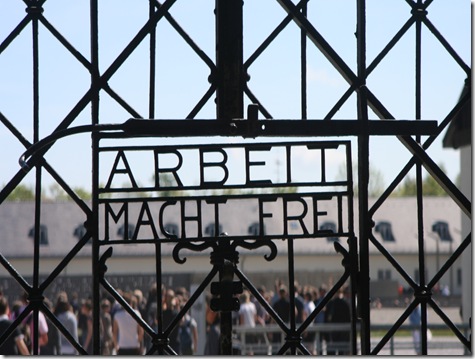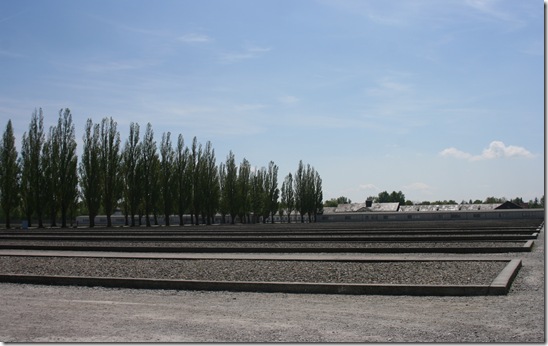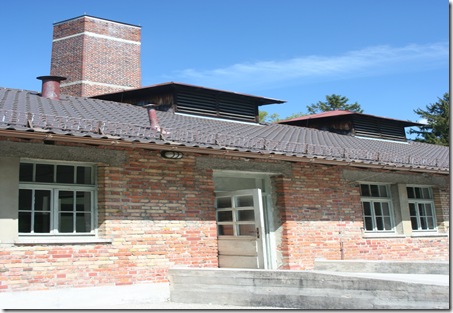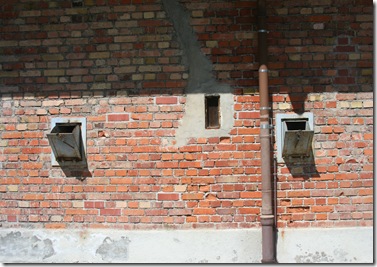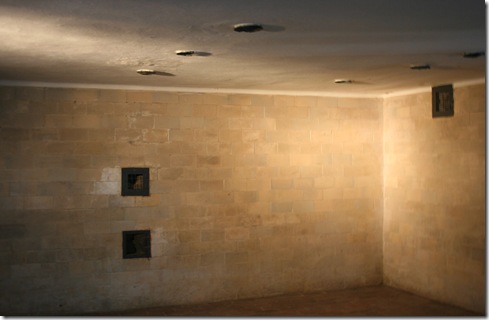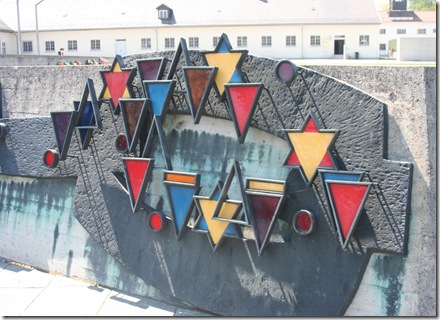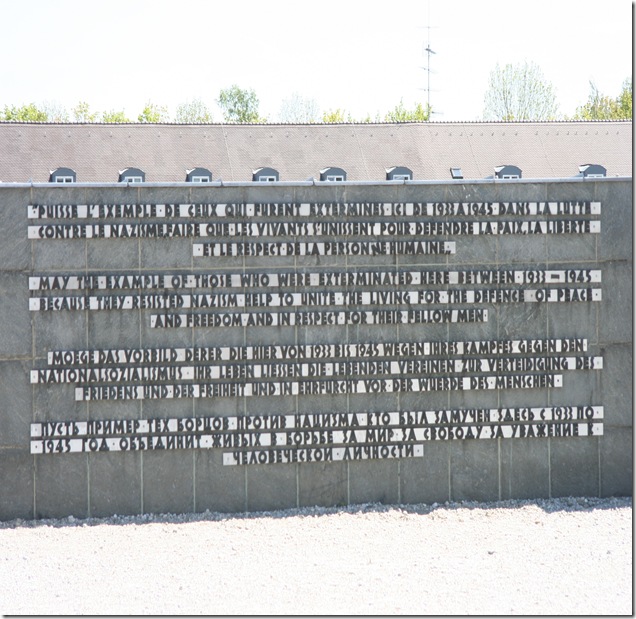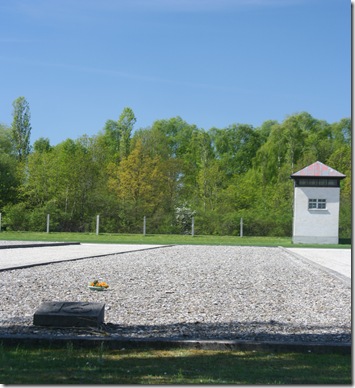Dachau was the first concentration camp in Germany and served as a model for future camps - the "Academy of Terror". The SS training camp was situated just outside the camp gates and instilled brutality into the young officers there.
The town of Dachau is just 18 km from Munich and still carries the stigma of the camp's history. Some mothers go to Munich to have their babies so the birth certificates won't say "Dachau". Other people, when asked where they live, will say "Munich" rather than have uncomfortable silence at the Dachau name.
We took the S Bahn to the same station where prisoners began arriving in 1933. We transferred to a bus which drove the route the prisoners would have walked from the station. Even a bus ride felt like a luxury with that knowledge. We then walked along the cobbled path they would have walked to reach the main gates.
One can read and watch movies and documentaries about situations but it is an incredibly overwhelming feeling to be standing on the site where so much horror and inhumanity occurred. The front gate was particularly unnerving with its "Work will make you free" motto.
A large part of the site remains as it was from 1933 to 1945. It was eerie to cross the square and hear the sound of our feet on the gravel. It was almost march like and it wasn't hard to imagine the SS, roll calls and armed guards.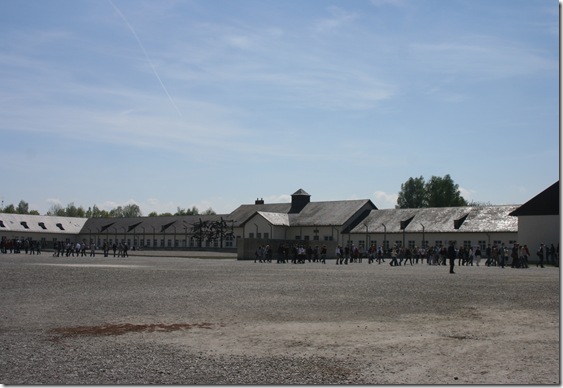
The barracks were torn down after the war but foundations have been erected to mark their locations.
A barrack has been reconstructed and documents the increasing deterioration in living conditions as the years progressed. From 52 men in one section in 1933 to over 200 by the time the war began. Bodies were packed so tightly together that a whistle would be blown at different times during the night so everyone could roll over at the same time. 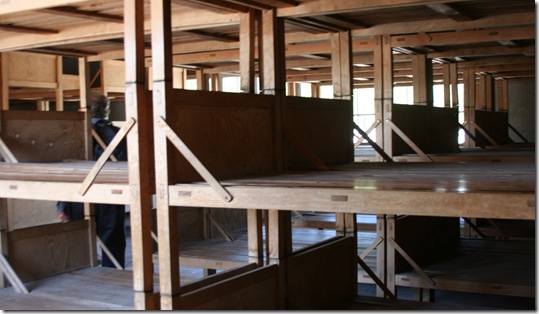
The camp was unique in that everything that subsequently happened in other camps had taken place at some level at Dachau. Prisoners recounted medical experiments and there was a crematorium and a gas chamber on the site. These were located away from the barracks and mass executions and hangings were carried out behind the buildings.
While the gas chamber was never used, there were reports of nerve gas testing being done there.
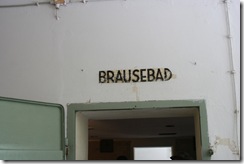 Prisoners would enter the "bath house" and guards would drop the chemicals (cyanide) in the chutes on the outside of the chamber. A small window would let them see the successful outcome of their experiments.
Prisoners would enter the "bath house" and guards would drop the chemicals (cyanide) in the chutes on the outside of the chamber. A small window would let them see the successful outcome of their experiments.
Standing inside the gas chamber was a chilling experience even knowing I was safe. The ceiling was low and the only light came from the open chutes. I was able to move to the next room when I became overwhelmed and couldn't help but think of the millions who didn't have that choice.
Seeing the crematorium was an incredibly disturbing moment. While the camp wasn't used for extermination per se, prisoners were executed or forced to commit suicide and bodies were put, often two or three at a time, into the ovens. Later in the war, coal became scarce and bodies were piled into this building and abandoned.
I had done some reading before this trip and came across the name "Fritz Dressel" in some of the articles. He had been the chairman of the Communist faction in the former Bavarian Parliament and was sent to Dachau as a political prisoner. He was executed there. Walking through the museum, I kept looking at photographs and wondering if I was looking at Fritz. But, in keeping with the Nazi mentality, there were only ID numbers under the pictures. All identities were erased at the gate.
The actual memorial site is also very moving. We walked down a sloping path made of granite slabs - a symbol of the decline in humanity. Halfway down was the memorial sculpture - emaciated prisoners throwing themselves on the electrified fence...incredibly powerful. 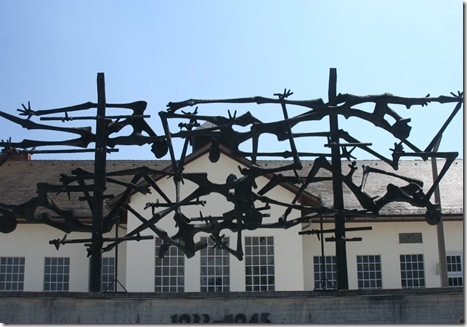
Close by was another display acknowledging the solidarity among the prisoners. Each triangle and colour represented the badges handed out to the prisoners to divide them into their specific categories - Jew, religious prisoner (including priests and Jehovah's Witnesses who refused to acknowledge the Nazi decrees), political prisoner etc. It was interesting to note that, in 1968 when this display was unveiled, some of the prisoner groups and their badges were still not acknowledged - the Roma gypsies, homosexuals, criminals...
The path began to climb again and we came upon the final message.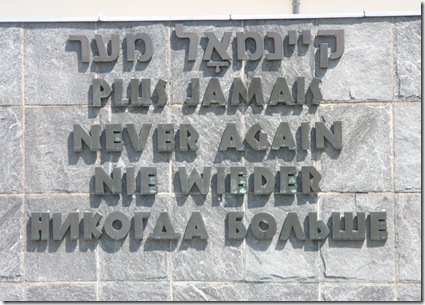
Closer to the entrance of the camp is another plaque placed by the survivors - encouraging forgiveness but asking that we not forget.
The anniversary of the liberation of the camp was last week and the walkway along the memorial section of the camp was a mass of flowers. 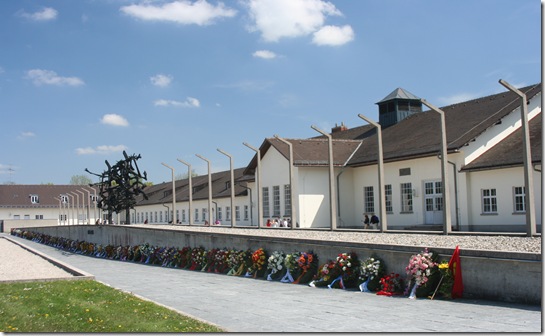
Families and survivors had also obviously been visiting other parts of the camp...and remembering.
It is a powerful memorial and our guide was informative and presented the history and the reality with incredible sensitivity. Although it meant more people, I was glad to see school groups on tour and hearing the message "never again". A marker just before the crematorium sums it up...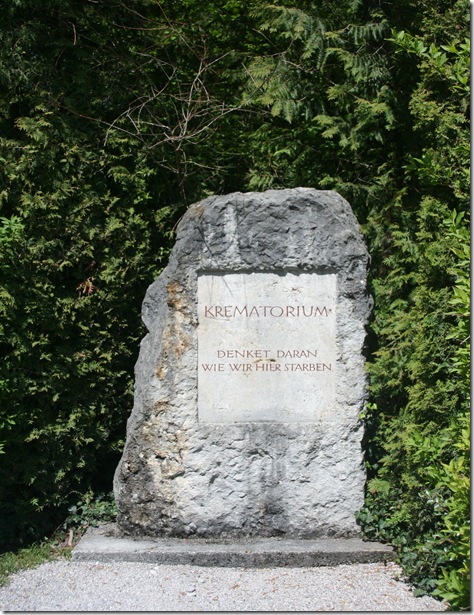 "We died here. Don't forget us."
"We died here. Don't forget us."
